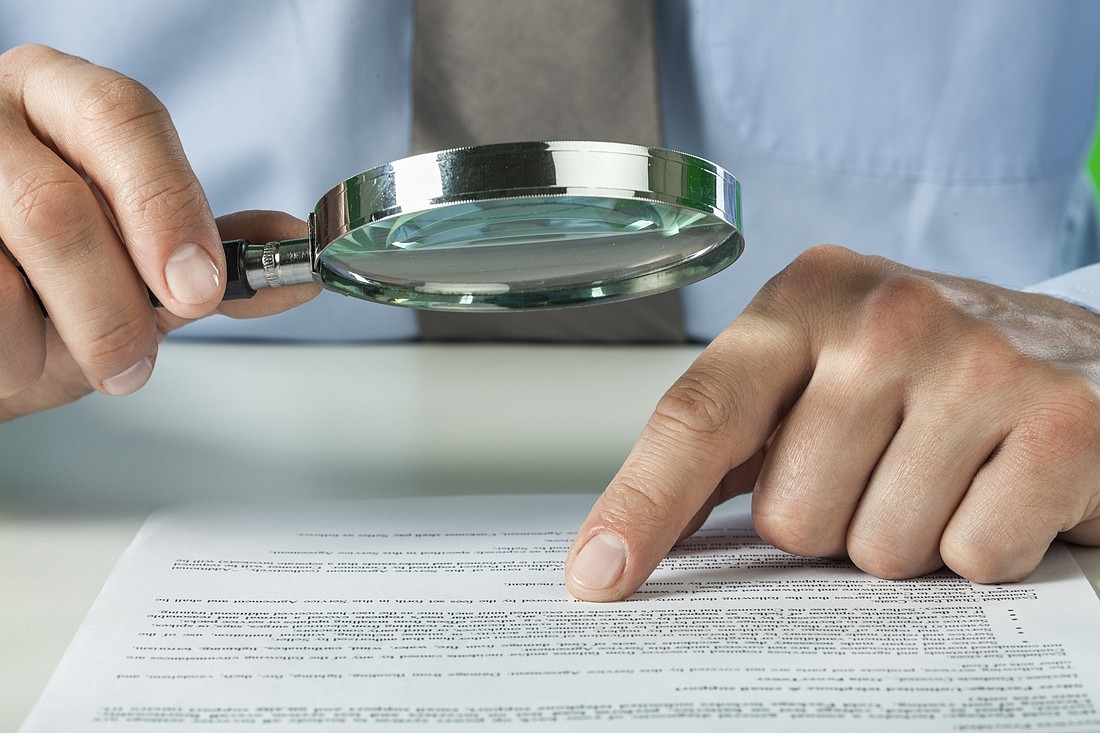
By Cindy Laquidara & Howard Jay Harrington
No one wants to take up court time briefing or arguing over discovery. Doing so can create the wrong initial impression before the court and delay the production of needed discovery.
We all have had cases where the seemingly endless hours seeking, responding to and reviewing documents produced start rapidly eating through the litigation budget, much to the client’s dismay.
In response to the quagmire that had become routine, or even inevitable, in discovery, the Federal Rules of Civil Procedure were amended in 2015, and the changes created a solid path to reasonable and cost-effective discovery.
Despite the passage of time, litigation practice still often results in preamendment requests and objections, and the use of the run-on requests and objections.
However, when one observes the constraints of the amendments — even in state court — discovery will be more focused, relevant and cost-effective.
Let’s focus on two of those rules which, although different from the state court rules, still provide the proper guidelines for conducting discovery: Fed.R.Civ.P. 26(b)(1) and Rule 34(b)(2). Rule 26(b)(1) provides that discovery must be relevant and proportional — and not that it is reasonably calculated to lead to admissible evidence.
Fed.R.Civ.P. 34(b) requires that objections must be specific. If you are withholding documents, you must identify them and you must state a schedule for the production of the documents you are producing.
To ask for relevant, proportional discovery, which translates into efficiencies for you, the court and the client, identify the proper burden of proof and prepare a proof checklist.
Determine what you must prove, then identify the key evidence or categories of evidence you need to prove it. Start with the basics and build up. Be prepared to explain why the requests to produce or admit or interrogatories are necessary to prove your case, and why the burden on the opposing party is proportional to the issues in the case and your need to prove them.
Ask for the documents you know exist and be specific as opposed to being all-encompassing on the first request, as it is likely you will learn more about the case as discovery proceeds.
If you proceed in this manner, you will be able to support and defend any challenges that come your way.
Abandon any remaining reliance on the reasonably calculated standard to draft discovery now, and reasonably calculate the justification later. This practice, akin to shooting the arrow and then painting the bull’s-eye around where it lands, is becoming more disfavored by the court.
When responding to discovery under Rule 34(b)(2), be specific. All-encompassing, prolix objections have been used for years. Many practitioners have a form objection that they can recite from heart: “Defendant objects to the request as overbroad, etc. . . . to the extent it seeks confidential information, and/or privileged documents, etc. . . . subject to and without waiving the foregoing objections, Defendant states, etc. . . . and a partridge in a pear tree . . . .”
These types of objections — though they may have been ingrained in the abundance of caution mindset of young associates for years — are, and always have been, worthless.
This type of general objection preserves nothing and informs no one on the scope of the objection, or on whether documents actually exist and are being withheld.
Following the amendments to the Rules, they are increasingly becoming the subject of scorn and sanctions from the court. See Liguria Foods Inc. v. Griffith Laboratories, Inc., 320 F.R.D. 168 (N.D. Iowa 2017) (in the authors’ opinion, the seminal case on what to avoid, and how to follow the new rules); see also Polycarpe v. Seterus, Inc., No. 6:16–cv–1606–Orl–37TBS, 2017 WL 2257571, at *1–2 (M.D. Fla. May 23, 2017) (citing Ligura with favor; collecting cases; and overruling all of defendant’s “general objections.”).
No one in your office could read the standard general objection and inform you as to what you are keeping; but that is exactly what should be the standard for making the objection in the first place.
Analyze your objections from the endpoint. Define those categories of documents sought that are not being provided. For example, instead of merely objecting as overbroad, explain that defendant objects to the production of any correspondence prior to 2015, and is withholding same, as the two-year statute of limitations ran on January 1, 2015.
Another example: Instead of relying upon the opaque, yet talismanic, objection of privilege, state that you are withholding all correspondence between trial counsel and the client relating to this matter and identify the beginning date. Prior to that date, provide a privilege log.
For trade secrets or confidential matters, note that you are withholding production until an order can be entered protecting their disclosure, and tender a proposed confidentiality agreement in compliance with the rules to opposing counsel. Research and identify the basis for your objections to ensure that you are not caught up short in a motion to compel, and that you are as prepared to address the weak facts relating to your case as you are the strong ones.
Finally, ESI discovery: Know what you are asking for and obtain technical help in obtaining it. This will help avoid the production of tens, if not hundreds of thousands, of irrelevant documents, and avoid the likelihood of missing that key email.
It can be a difficult argument to do away with the general objections when you are co-counsel or part of a team. However, this outdated style of discovery is contrary to the amended rules.
To avoid potential excoriations by the court, and to save time and money for you and your client, leave the kitchen sink at home.
Cindy Laquidara is a partner with Akerman LLP with an established practice including complex litigation, administrative hearings, and federal and state trials and appeals.
Howard Jay Harrington is an associate with Akerman LLP focusing on commercial litigation.